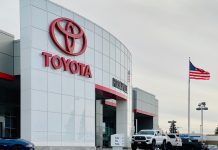It’s hard to find good people these days. According to data from the U.S. Bureau of Labor Statistics, approximately three million employees have left their jobs voluntarily since June 2017. HR software company, BambooHR surveyed 1000 Americans who were currently employed and found that a third of them quit jobs within six months. When speaking specifically about car dealers, Automotive News revealed that the annual average turnover for salespeople is 67 percent. It is clear that companies all over —including car dealers—are having issues recruiting and retaining the people. Read on for five HR tools that can help locate the best talent and provide an excellent onboarding experience that keeps them around.
A Talent Management Strategy
Before you purchase any software, you should sit down with your HR team and discuss how you plan to search for, recruit, and retain the best people for the jobs. A talent management strategy can get the ball rolling. A talent management strategy allows you to develop a plan for marketing your company culture to attract potential employees, and develop ways to keep them one they are there. So, take time to discuss how you will manage and gather their information, the professional development and training procedures you will put in place, and ways to keep them satisfied and on track.
An HR Management System
Now that you have put together a plan for how you will find and retain talent, the next step is to locate a system to help you do this. There are many options out there, some are tailored just for automotive dealers like Hireology, while others are highly rated for multiple industries like BambooHR. A robust HR management system should allow you to track applicants, ensure the onboarding experience moves smoothly by providing all documents for employees to sign and submit, monitor performance and productivity, and manage all employee records. It should be your one-stop shop for keeping up with your employees.
An Excellent Onboarding Experience
According to the HR management company, O.C. Tanner, 69 percent of employees are more likely to stay with the company for at least three years after an excellent onboarding experience. An employee’s first week is incredibly pivotal, so ensuring it is a good one will likely keep your new team member around for the long-haul. According to BambooHR’s study, here is what employees are looking for in their first week of employment:
- On the job training, a review of company policies, a company tour, and a mentor are all critical things new hires felt they needed the first week on the job.
- These individuals are looking for training from managers instead of HR.
- Workers want management to be honest about their actual duties.
- Out of everything, employees are looking for clear guidelines and practical training.
The onboarding process should be a time where managers can sit down with employees and discuss their goals and aspirations, while managers can inform them of the expectations and guidelines for the job. Employees want to hit the ground running, and a productive first week can keep them coming back.
Performance Review Process
It is vital that performance reviews not be an annual event, but the dialogue between yourself and your employees about their work should happen throughout the year. Your overall impression of their work should not be a surprise. So, it is not a bad idea to have weekly check-ins where you not only inform them about their progress but also ask for feedback about tasks and address any questions they have. Also, employees should have clearly defined goals and expectations they can act on so you can track their progress using an HR management system. This ensures you have something tangible to measure their performance with so you can have a conversation about how they are doing. Performance review processes should be treated more like a dialogue, where employees explain what they have done, you provide positive and constructive feedback, and then discuss next steps.
Routine Surveys
In connection with the previous entry, dealers should strive to encourage regular feedback from employees. This step is vital because employees can reveal operational problems or even offer ideas that help things move smoother. These can be known as pulse surveys. They capture the quick “pulse” of workers and are an excellent way to assess their satisfaction and overall view of the company. One of the most important things about receiving feedback from employees is that managers have to make an effort to follow-up and address their input when possible. This ensures employees feel motivated to continue to provide honest and helpful feedback.
Final Thoughts
The stats above are a clear indication that keeping employees satisfied and motivated can be a challenging task. However, your number one goal should be to increase employee engagement. The more that employees feel their needs and satisfaction are a priority, the higher the chance of their commitment and loyalty to your dealership. Concerning engagement, communication is critical when it comes to managing their performance, and giving them opportunities to thrive, so always look for ways to keep the lines of dialogue open.








